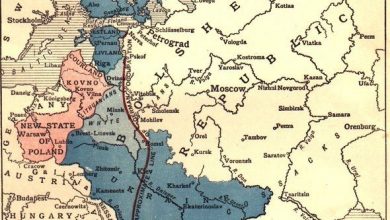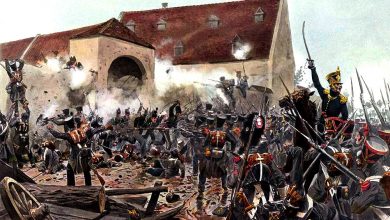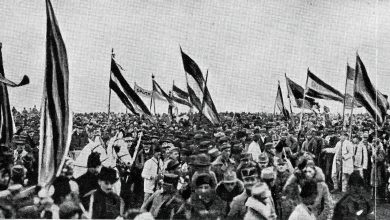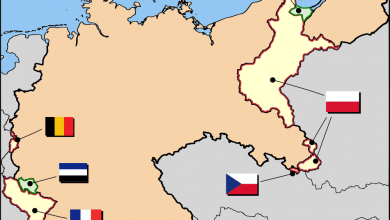On this day (June 22) in 1941: Operation Barbarossa

Today is a significant date for two reasons: on this date in 1940, the Republic of France surrendered to Nazi Germany at Compiégne. And one year later, in 1941 the Germans invaded the Soviet Union beginning Operation Barbarossa.
It’s interesting that Hitler’s greatest success fell on the same date as his most fatal mistake. But perhaps, like Napoleon, he believed certain dates to be propitious. Another interesting bit is the contrast between the two campaigns. Everyone had expected the French to win, but they were defeated. On the other hand, everybody expected the Soviets to lose, and they won.
By the time the Germans struck the Soviet Union, it was taken for granted that the Germans were immeasurably strong. They had won everywhere else, had they not? So American and British officers assumed the Soviets would lose too. But the conditions were different. There was no swift knock out blow possible. The Soviet Union was the opposite of France.
France was extremely defensible, its frontiers were solid and easily defended. But it had no depth. If the French line were broken, if it were not reformed rapidly then France would be quickly occupied and Paris would be taken. Russia was extremely indefensible. Its borders were fluid, the great length of their western border made it impossible to prevent an enemy from crossing. Yet the Soviet Union had so much depth that its line could be broken again and again, but still find room to reform. The German knock-out blow so fortunately delivered to France was impossible to deliver to Russia. The Soviet generals made more mistakes than the French could ever dream of making. Millions of soldiers encircled and defeated. Yet despite these successes, Germany found none of these blows was sufficient to knock the Soviets out.

Operation Barbarossa, the code name for the invasion of Russia, was aimed at knocking Russia out of the war before winter could set in. Stalin panicked. He had not fortified his frontiers or ordered his troops to withdraw when attacked. Two thousand planes were destroyed on the ground. By November Hitler had gone farther into Russia than had Napoleon: The German army stood at the gates of Leningrad, on the outskirts of Moscow, and on the Don River.
Of the 4,5 million troops with which the Russians had begun the fighting, they had lost around 2,5 million; of their 15 000 tanks, only 700 were left. A German victory seemed imminent. Moscow seemingly lay open to a German advance, but at this point Russian weather intervened with heavy rains that turned the roads into morasses. The frosts of November solidified the mud, so that the drive could resume.

The Germans struggled to the gates of Moscow where Soviet counterattacks stopped them in early December. In desperate conditions, they conducted a slow retreat as Soviet attacks threatened to envelop much of their forces in a defeat as disastrous as that which befell Napoleon’s Grand Army in 1812. In the end, the Soviets overreached, and the Germans restored a semblance of order to the front; the spring thaw in March 1942 brought operations to a halt. But Barbarossa had failed, and Nazi Germany confronted a two-front war that it could not win.
Alf W. Johansson says “in regards to cynicism, ruthlessness, and outright criminal behaviour, the military campaign against the Soviet Union takes a unique position in world history. The war was planned from the start as a war of extermination where any notion of military honour and human respect was set aside”.

The primary strategic (not ideological) goal of the invasion was to seize Soviet oil and food production, believing it would render Germany truly invincible. According to the “Hunger Plan” developed by the Reich Minister of Food (Herbert Backe), the capture of Soviet food manufacture, especially in Ukraine, was believed to lead to the death by starvation of around 20 to 30 million people, especially in the larger cities.
Hitler, Göring, and Himmler embraced the Hunger Plan with great enthusiasm. It seemed to promise an end to the growing food problems in Germany, and solve problems posed by the Slavs and the “Judeo-Bolshevism”, by simply starving them out. The Wehrmacht also approved of the plan. The ability to supply 3 million German soldiers and 600 000 horses by using local venues would immensely decrease the supply problems that long supply lines would produce. According to Wehrmacht guidelines, Soviet POWs would also be starved and not fed unless there was room for it.
Operation Barbarossa was the largest military operation in human history – more men, tanks, guns and aircraft were committed than had ever been deployed before in a single offensive. The invasion opened up the Eastern Front of World War II, the largest theatre of war during that conflict, and it witnessed titanic clashes of unprecedented violence and destruction for four years that resulted in the deaths of more than 26 million Soviet people. Damage to both the economy and landscape was enormous for the Soviet Union as approximately 1710 towns and 70 000 villages were razed to the ground.
Many see the invasion of the Soviet Union as a mistake, but that is with the benefit of hindsight. Hitler had actually succeeded completely in isolating the Soviet Union by 1941. Germany acquired the active assistance of Finland, Romania, Hungary, Bulgaria, and Italy, with the passive assistance of Sweden, Spain, Japan, and Turkey. Russia was entirely alone.
But where Hitler won diplomatically, for the most part, he lost militarily. The Germans frittered away their strength in pursuing overly ambitious objectives allowing the Russians a critical breathing space. The Russians were still on hard times, but they lived. They were able to stop Hitler in front of Moscow on their own power, and at the beginning of 1942 were able to push back, without much success as of yet but their strength was recovering.

Another common mistake regarding the invasion, is that it was decisively, fatally postponed by the German invasions of Yugoslavia and Greece. However, the delays caused by bringing back the formations in the Balkans and Crete were, in fact, not serious enough to prevent the deployment of the eastern armies being more or less completed by June 10, 1941.
Furthermore, the option existed to assign the few units in transhipment to the strategic reserve and begin the campaign in the east no later than mid-June without waiting for these units to reach the areas to which they had been allocated. After Hitler agreed to the projected continuation of the preparations on June 6 and simultaneously confirmed June 22 as the date for the attack, deployment was completed according to plan.
There were no perceptible indications that the OKH was urging an earlier start of the campaign in order to achieve a victorious conclusion before the onset of autumn mud in early October. Nor were any warning voices raised in the General Staff against the conquest of Crete on the grounds of time pressure, even though this was only completed on June 1.
What mitigated against a theoretical invasion date at the end of May or in early June was the fact that many rivers in the western Soviet Union which would have to be crossed in the course of the attack, including the Bug and the Narev, were still in flood until well into June and would, therefore, have presented a very disagreeable obstruction. For this reason alone, an attack after June 10 appeared to be the only realistic possibility.






“Another common mistake regarding the invasion, is that it was decisively, fatally postponed by the German invasions of Yugoslavia and Greece. However, the delays caused by bringing back the formations in the Balkans and Crete were, in fact, not serious enough to prevent the deployment of the eastern armies being more or less completed by June 10, 1941.”
This is not correct. Had the attack began earlier in the summer, Moscow would have fallen. There would have been several weeks of dry weather after the massive Bryansk – Vyasma. Latest records show Soviets only had about 130000 troops in front of Moscow after this battle.